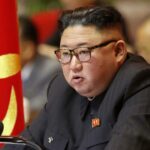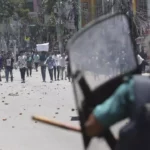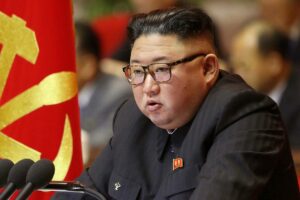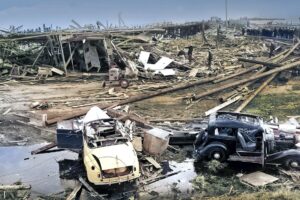50 years ago today, during the Lao new year, the US blew up my father’s village, leaving a legacy of unexploded munitions
My father always remembered the fresh Jasmine flowers that adorned my grandmother’s house with a warming fragrance, a comforting mix of floral nectar and the hazy dew at sunrise to signal the beginning of the rainy season. The”‘pa khao,” a traditional rattan table, was set close to the floor, covered with a ceremonious amount of colorful dishes that looked as if they were painted onto the table. The voices echo from the kitchen, a mixture of conversations starting with “Sabaidee pii mai” and “hue lue bor?”Are you hungry yet?
Then it becomes completely silent, the color in the room dissipates. Something outside sounds like a disastrous storm. There’s loud pounding, constant thunderous noise, but there’s not a drop of rain in sight.
It’s the deafening sound of bombs raining down relentlessly, wreaking havoc, a downpour of destruction.
It was April 16, 1973, the last day of the Lao New Year, when multiple American B-52 bombers and F-111 fighters hit the village of Tha Vieng, right outside the Plain of Jars in Xieng Khouang province after it was reportedly taken over by tanks and troops from the North Vietnamese Army. Jerry W. Friedheim, then the assistant secretary of defense for public affairs, considered the enemy operation as a “major violation of the ceasefire.”
That ceasefire started on February 22, but it did not last. The very next day, nine B-52s and about 12 fighter-bombers targeted the Northern Vietnamese and Pathet Lao troops, in the southern part of the country in Paksong.
President Nixon warned Hanoi to stop ceasefire violations or face a reaction, and that reaction included resuming military operations in the neutral nation of Laos during what was supposed to be the most festive, peaceful, and celebratory time of the year — Pii Mai — also recognized as Songkran or Solar New Year in Thailand, Cambodia, Myanmar, and Sri Lanka.
Pii Mai is a vibrant three-day celebration that falls on an auspicious day every year in April. The first day is commonly known as Sangkhan Luang (ສງັນລວງ) and marks the end of the old year and begins with cleansing homes, washing away past grievances, and making reparations for the incoming year with renewed spirits.
Lao New Year is comparable to Easter in the West. It’s a holiday rooted in religious origins accompanied with the excitement of rebirth and renewal embellished with an array of pastel colors, family festivals, and endless sweets that perfectly embody the convivial time of year.
So imagine if a powerful foreign country began bombing your homeland during Easter weekend.
During Pii Mai,families rest, spend quality time with their loved ones, and engage in the traditional custom of throwing fragrant water at one another to represent blessings and good wishes. It is also customary to have a Baci ceremony where families tie white blessing strings on one another for good health, prosperity and eternal happiness. Communities conduct a ceremony to honor their ancestors, relatives, and loved ones by presenting food and offerings to the Buddhist monks. This act serves as a tribute to their heritage and pays homage to those who came before them ensuring that they’ll always be remembered.
So why did the conflict continue during this sacred time, and why has it never been publicly acknowledged before?
We have all read about the Christmas bombing of North Vietnam in 1972 right before the signing of the Paris Peace Accords on January 27, 1973, but the bombing of Laos after the agreement and a ceasefire was put in place — during what some consider as the most important time of the year for Lao families — is largely unknown.
Fifty years after the last bomb was dropped, we are still uncovering more about what happened to Laos. Today, U.S. involvement in Laos remains an overlooked part of American history, with the legacy of unexploded bombs continuing to threaten the lives of people in Laos. The U.S. should meaningfully recognize the history of the Secret War and the humanitarian efforts still necessary to solve this challenge.
President Obama made history as the first sitting president to visit Laos. There, he acknowledged U.S. military operations there and committed funding for humanitarian demining efforts in 2016. More elected officials can continue the life-saving path he paved by visiting Laos, Cambodia, and Vietnam and support the ban on the use of these indiscriminate weapons. We can rely on American leadership to uphold a peaceful legacy moving forward.
Following in the footsteps of our ancestors in Laos, we are paying tribute to the lives that were lost, the families that were separated, and the refugees who were displaced by telling their story and keeping it at the forefront of the American consciousness.
This Pii Mai, we want to make sure Laos is not forgotten.
Source: Responsible State Craft















